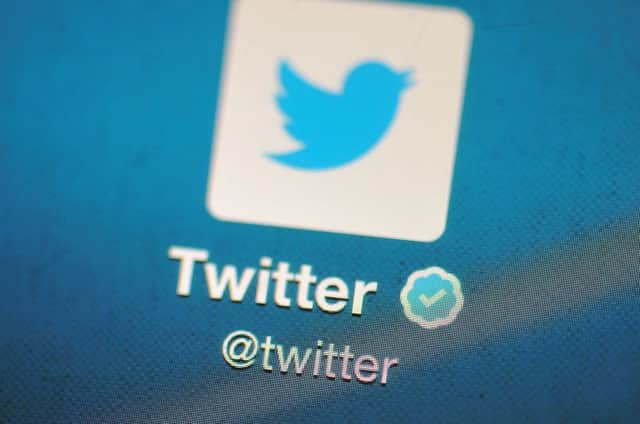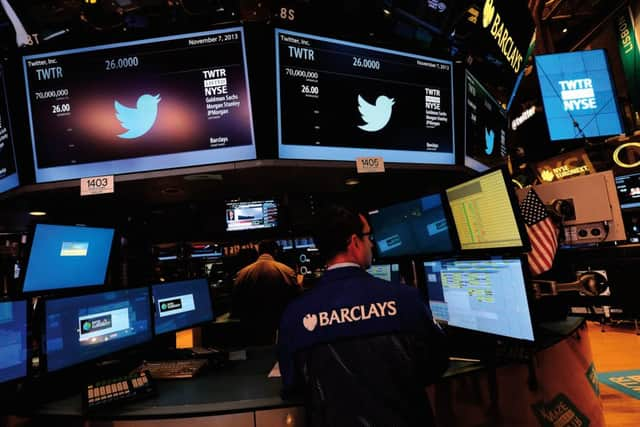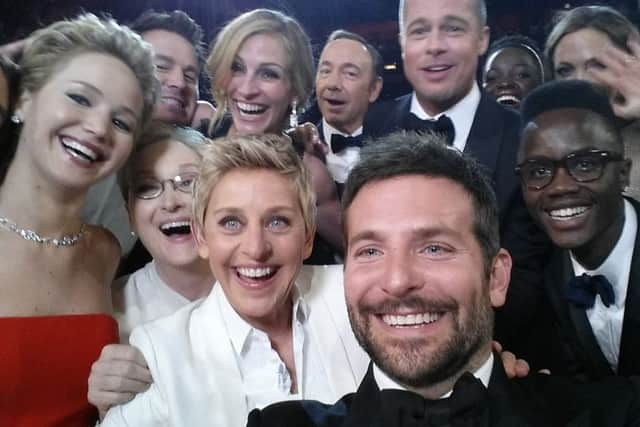Hashtag backlash: Can Twitter recover from its slide?


To avid users, engagement with Twitter is a bit like being trapped in a dysfunctional relationship. On good days, it is joyful, life-enhancing. As disaster descends, you draw strength from each other. You laugh together, you cry together. You have fierce, but good-natured debates on topics of mutual interest. You share the same twisted sense of humour. So even at the bleakest moments – say, the massacre in France – you understand that Kay Burley posting an image of a miserable-looking Labrador with the hashtag #sadnessinhiseyes is hilarious and you respond with a few sad dog pictures of your own. On a bad day, though, it can feel as if you’re drowning in a cauldron of bile. There are no positive vibes to be had, so you flounce off in high dudgeon. Only to crawl back a few days later because you just can’t function without it.
To avid users, Twitter isn’t merely a social media platform, it’s a way of life. Politicians rely on it to promote their agendas and journalists to promote their stories. Celebrities rely on it to raise their profiles and activists to publicise their cause, but it’s a double-edged sword. It can make careers, but it can also break them. It empowers the oppressed and oppressors alike. It has the potential to democratise, giving a platform to those outside the mainstream, yet it favours those with the loudest voices. It is – in short – a fascinating, contradictory, often infuriating beast which shapes the political agenda and has revolutionised public discourse.
Advertisement
Hide AdAdvertisement
Hide AdYet despite its popularity amongst society’s so-called movers and shakers, Twitter is facing something of a crisis. In 2015, staff began to desert and growth stalled, with just 3 million new users in the first quarter of last year compared with 30 million in the first quarter of 2014. Where its founders set a target of one billion users within a decade, the actual figure stands at around 307 million monthly active users (15 million in the UK). Meanwhile, many of its competitors are flourishing: Facebook has 1.4 billion users (50 per cent of those who are online worldwide have an active account) and it attracts people of all ages. Instagram and Snapchat – which are more popular with the under-30s – are expanding at a phenomenal pace, with Instagram overtaking Twitter at the beginning of last year. Though Twitter is raising revenue through promoted tweets and trends, it made a £431 million loss in the first three quarters of 2015 and its stock price fell by 50 per cent in the last six months of the year.


When Twitter floated in 2013, it appeared to be riding high. But a period of stasis was followed by a period of uncertainty. For five months after the departure of Dick Costolo the company operated without a CEO. Then, in October, one of its founders, Jack Dorsey, was appointed in his stead. Dorsey – who had held the position previously – believes change is necessary to bring more users on board. Now, every time you log on, it feels like something has been tampered with: the “favourite stars” changed to “like hearts” and a Lightning icon suddenly appeared which heralded the introduction of “Moments”, a service that summarises the biggest events of the day through a series of tweets.
Some of these changes to the old format are viewed as little short of treachery by long-time users. But none more so than the one mooted last week: the abandoning of the 140-character limit.
After the move was revealed, Dorsey took to Twitter to defend it, pointing out that users were already taking screen-shots of text and tweeting them. His statement was greeted as only Twitter knows how: with outrage and a slew of new hashtags. Some users did agree with Dorsey, claiming short Tweets made for superficial and reductive debate. But many more viewed the 140-character limit as the social media forum’s defining feature.
Advertisement
Hide AdAdvertisement
Hide Ad“If I want to read blog posts, I go and read blog posts. In the same way as in poetry, with haikus and sonnets, formal constraints can produce immense creativity,” said one prolific tweeter. The market also expressed misgivings as the share price dropped 2.97 per cent to an all-time low of $21.89.


Whatever your personal feelings, the backlash illustrates the problem facing Dorsey: how to attract new users without alienating existing ones; how to adapt to a changing climate without destroying the very features that made the platform so appealing in the first place.
“Twitter is an incredibly successful social network,” says Matt Roper, digital editor at STV. “Millions of people use it to communicate and many of those who use it every day – and that’s a large chunk of journalists – can’t imagine doing their job or spending time without it.
“It’s more loved than a lot of other social network platforms and fulfils a lot of different uses. Where Facebook is for friendship, Twitter is for interests. It allows you to say anything you want to a public and can be tailored to your own tastes. For people who are into breaking news, it gives live experience of a developing story in a way no other service does.”
Advertisement
Hide AdAdvertisement
Hide AdTwitter has also been successful at raising revenue (albeit not enough). And, by coming up with the concept of promoted tweets and trends, it has allowed advertising to be integrated reasonably unobtrusively into the service.


But Twitter’s flaws are also well-documented. One of them – as Roper points out – is that its use is not as intuitive as, say, Facebook. For all its putative inclusiveness, it can feel like a bit of a club, with its own lexicon, etiquette and in-jokes. Unlike Facebook – which has a cache of personal information to work with – Twitter knows very little about you when you sign up, so it can take months for individuals to create enough of a network to make life interesting. Some quickly give up.
“Maybe Twitter should introduce an optional new user mode, a kind of Welcome to Twitter pack for those setting up an account for the first-time,” says @pastachips, who uses Twitter socially and to campaign on sex worker issues. “It could say: Here’s the Moments tab – this will show what the big news stories are. It could go through a checklist of interests and then could create you a basic follow list of say 100 people.”
More pressing for @pastachips and many others, however, is Twitter’s failure to adequately tackle trolling or orchestrated hate campaigns. This is not a straightforward challenge. There is a balance to be struck between protecting people from abuse and ensuring freedom of speech, and algorithms to safeguard users that are based on particular words are unlikely to be sophisticated enough to deal with the complex way in which language and tone is employed.
Advertisement
Hide AdAdvertisement
Hide AdBut many users want the blocking service to be more robust so those who have abused you cannot tag you or appear when you click on a particular hashtag. The idea of a group block – where a troll could be cut off en masse – has also been suggested, as has giving users the ability to edit out a particular word, phrase or topic.


But, if Twitter has been slow to fix things most people agree need fixing, it has shown less restraint when it comes to changes on which there is no consensus. As growth slowed, those in charge started to tweak the service in a manner which suggested they were looking over their shoulder at Facebook. Some of its innovations – such as the doing away with the 140-character limit on direct messages – have been well-received. Others less so.
There has, for example, been some consternation about the way it is messing around with people’s timelines. Where Facebook uses complicated algorithms to edit what appears in its users’ news feeds, Twitter applies no such filter. Instead, tweets appear in reverse chronological order. This makes sense. Twitter users curate their own feed by choosing who to follow; they don’t want their choices interfered with.
Towards the end of 2014, however, Twitter admitted it was adding tweets into people’s feeds from accounts they didn’t follow. Then, early last year, Twitter introduced a “While You Were Away” feature, which puts the three “top” tweets that have appeared in the user’s absence at the top of their timeline.
Advertisement
Hide AdAdvertisement
Hide AdTwitter is also investing a lot of energy in Moments. This service is seen as a means of making the platform more accessible to new users, and has a commercial element too. It includes “Promoted Moments”: ads which, when clicked on, provide a series of tweets and Vines (shared video clips) about an occasion – a film premiere for example – which is sponsored by the brand involved.
Described as “its most important feature ever” by Wired, Moments has so far met with a bit of a “meh’” from some users who see it as a distraction from Twitter’s bigger reputational problems. This, anyway, is the feeling expressed by @actioncookbook, who tweeted: “USERS: Could you at least look at addressing the pervasive harassment of women? TWITTER [twirling like Maria von Trapp]: M O M E N T S.”
Prolific users are a sardonic bunch and there seems to be a sense that Twitter is focusing on Moments while ignoring calls for other innovations, such as the facility to edit tweets for a short period after they have been sent.
Now they are being confronted with the suggestion that the 140-character limit might be abandoned. “I think the worry for hard-core users is that [composing a tweet] in 140 characters has become something of an art,” says Thom Watts, digital account manager with PR company Weber Shandwick which has conducted research into Twitter use. “If you look at the most popular tweets ever, they are the Ellen DeGeneres Oscars photo, which was eight or nine words, and Barack Obama’s ‘Four More Years’.
Advertisement
Hide AdAdvertisement
Hide Ad“On Facebook you can soak up what’s happening and have time to read and reflect, but Twitter is in front of your eyes and rolling, so forcing people to stop and ponder what they are reading might not lend itself to the medium quite so much.”
Even so, Watts is not sure the change will have as great an impact as the doom-mongers suggest. “People are very protective of Twitter. When they introduced the ‘like’ button rather than favourite button there were scores of people threatening to leave, but it didn’t turn out to be the grand apocalypse people were predicting,” he says. “I don’t think timelines are suddenly going to be clogged up with James Joyce-length novellas. It’s probably going to be as is, with 140 characters displayed, but a “click more” option so you can open it up into something wider.”
Roper says Twitter needs to keep growing because the big brand advertisers it wants to attract are looking for the scale that Facebook offers. It also needs to meet the expectations of shareholders and keep the likes of Instagram at bay.
But there is another school of thought that suggests an obsession with Facebook, at the expense of its own identity, could be Twitter’s undoing. “There have been people within the company who have said: ‘Maybe we are just not destined to be Facebook, maybe we are not a billion-user company, maybe we should just concentrate on being the best 300 million to 400-million-user social networking platform,” says Watt.
Advertisement
Hide AdAdvertisement
Hide AdThe truth is the world of technology moves so fast, it’s impossible to predict where Twitter will be in two years’ time. “At the moment, Facebook appears to be doing better than Twitter. The stock market certainly thinks so and there’s been a degree of existential crisis,” Roper says.
“Now it’s got one of its founders back. He, for better or worse, will give Twitter a clear sense of direction. What happens next will depend if that direction chimes with want the public wants – and the public often doesn’t know what it wants until it sees it.”
Roper believes the scale of Twitter’s problems has been overstated and that it is well-placed to adapt. “But things can go quite quickly – if you mess up the core service, people can just leave,” he says. “It’s not like success is a given. There’s creative destruction going on in the tech world all the time. You think Microsoft will be dominant, you think Google will be dominant, you think YouTube will be dominant, you think Facebook will be dominant, but maybe something else will come along. There’s no guarantee for anyone.” «
Twitter: @DaniGaravelli1